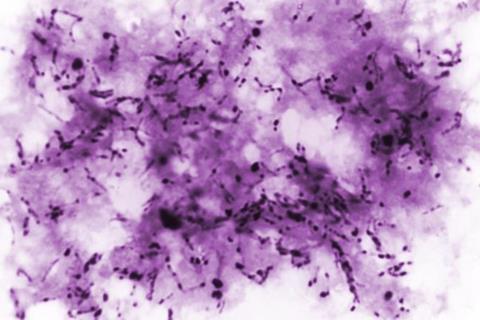A collaborative study between the A*STAR Infectious Diseases Labs (A*STAR ID Labs) and the University of Massachusetts (UMass) Chan Medical School has uncovered that elevated glycerol levels are responsible for increased severity of tuberculosis (TB) disease in experimental models with Type 2 diabetes (T2D).

This research advances our understanding of how both diseases interact with each other, identifying elevated glycerol and an enzyme utilising glycerol in the pathogen responsible for causing TB as novel therapeutic avenues for treating patients with these conditions. The paper was published in Nature Communications on 20 September 2023.
Global killer
TB is a leading infectious disease killer, causing 1.3 million deaths globally in 2022 alone. Asia is currently a hotspot for TB, amassing more than 65 per cent of newly diagnosed cases globally. TB is endemic in Singapore and latent TB infection is up to 30 per cent in older age groups.
In 2022, there were 1,251 new cases of active TB among Singapore residents. T2D, which is also prevalent in Asia and is on rise in Singapore, is associated with higher mortality rates due to TB. Also, people with T2D tend to have a higher chance of TB coming back after completing TB treatment - four times higher for a regular relapse and two times higher for a more severe form called multidrug-resistant TB (MDR-TB). Despite these alarming statistics, the underlying mechanisms of how T2D and TB interact have remained elusive.
This study sheds light on the mechanism behind this interaction and the exacerbated TB disease among the experimental models with T2D. It also underscores the vital importance of preventative and proactive disease management in T2D patients, aligning with the Healthier SG plan’s key priorities.
More bacteria
The researchers of this study found that T2D led to more bacteria in the lung, tissue damage and deaths when infected with Mycobacterium tuberculosis (Mtb), the bacterial pathogen responsible for causing TB. Notably, elevated blood glycerol, a sugar alcohol, emerged as a crucial factor influencing the interaction between T2D and TB.
When the ability of Mtb to utilise glycerol for metabolism was blocked, by deleting an enzyme known as glycerol kinase, the severity of lung damage decreased. This indicated that Mtb can feed on glycerol to drive TB disease severity in T2D. As a result, people with T2D are more likely to be susceptible to TB because Mtb can utilise excess glycerol present in their blood and bodies, leading to more severe disease.
This study makes a significant breakthrough in our understanding of TB-T2D interactions by pinpointing elevated glycerol as a novel therapeutic target for treating TB disease in T2D patients. This paves the way for developing innovative host-directed therapeutics, which is crucial for addressing the heightened susceptibility of T2D populations to TB, particularly in the face of increasing TB drug resistance. As the prevalence of TB increases not only in Singapore but also globally, understanding how it interacts with other diseases becomes an increasingly urgent global health priority.
Drug target
Dr Amit Singhal, Senior Principal Investigator at A*STAR ID Labs and co-senior author of the study, said, “Our findings link TB severity in T2D to glycerol levels, a factor that is currently not considered in clinical studies. Furthermore, it highlights the importance of Mtb’s glycerol kinase as a TB drug development target, which may add to our arsenal against antibiotic-resistant bacteria.”
Dr Hardy Kornfeld, Professor at UMass, co-senior author of the study and an expert in TB-diabetes crosstalk, said, “It’s known that people with type 2 diabetes have three-fold increased risk of contracting TB. Linking glycerol levels to this interaction is exciting and opens up avenues for designing potential novel therapeutic strategies against TB.”
Prof Lisa Ng, Executive Director at A*STAR ID Labs, said, “This study sheds light on how TB interacts with other chronic diseases like diabetes. This may prove crucial for the future of healthcare in Singapore given that the number of diabetics in Singapore is forecasted to increase.”glycerol







No comments yet